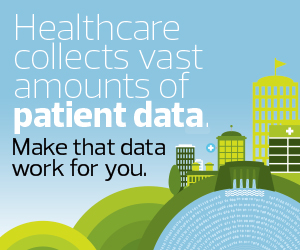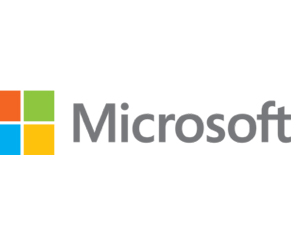Digital solutions have driven massive changes in the healthcare industry in recent years, both in patient care and in business operations. The rapid evolution of technology will spur even greater changes going forward, affecting clinicians, line-of-business staff and IT teams.
One key change spurred by this evolution is that IT is being integrated more fully into patient care and other operations. To support this shift as they engage in digital transformation initiatives, IT teams must be more aware of user needs than they have been. In years past, IT departments were focused on maintaining the operation of data center infrastructure, says Tom Stafford, CDW director of healthcare strategy. Now, these teams focus on delivering software that helps end users — both clinicians and business staff — to do their jobs more effectively.
“The focus should be that we are enhancing their jobs and making the workflows better, making it easier for all those different folks to do their jobs,” Stafford says. “CIOs are now much more ingrained in the operations of the hospital.”
As they work toward this objective, healthcare IT teams are increasingly relying on cloud services and making strides in how they use data analytics and automation to enhance decision-making, increase efficiency and optimize patient care.
LEARN MORE: Read CDW’s white paper “How IT Enables Providers to Optimize Care.”
3 Factors Driving Cloud Adoption in Healthcare
CDW Healthcare Strategist Director Eli Tarlow cites the widespread adoption of cloud solutions as a prime example of the evolution of healthcare IT. He points to three key factors that are driving this trend.
Staffing shortages: Healthcare organizations face serious competition for skilled IT professionals, among other roles. Recruitment and retention are major challenges, and many HC organizations are addressing this issue by moving workloads to the cloud.
The need to scale quickly: IT hardware takes a long time to deploy, and many IT professionals find it difficult to predict demand, so it’s a challenge to know how much capacity to acquire. The cloud simplifies these decisions and enables easy capacity growth (as well as burst capacity to deal with unusually high periods of demand).
Virtual care: In years past, when most care was provided onsite, it made sense to have a data center on-premises at a hospital. But more recently, as telehealth and other virtual care models have become more widely adopted, many hospitals have migrated workloads to the cloud to take advantage of the flexibility, scalability and simplified management it provides.
The cloud offers other benefits as well, according to Stafford. “Having data in the cloud allows you to have access to tools that typically a healthcare organization can't access because they're too expensive,” he says. “And they don't need to use them day in and day out, so they essentially rent higher horsepower in the cloud, or even a natural language processing engine, or some type of machine learning to manipulate the data and come up with decisions or visualizations around them.”
Click the banner below for more insights on the growing importance of data in healthcare.
How Data Improves Decision-Making for Better Outcomes
Improved decision-making is a critical advantage for healthcare organizations. Making better use of the data they have on hand can lead these organizations to make better decisions on a variety of issues — everything from improving a patient’s care to more accurately staffing departments to meet their needs.
“Hospitals are actually making better decisions and improving care through data, and also making workflows and processes within the hospital more efficient,” Stafford says. “They're measuring them with data now and correcting them accordingly.”
Data is essential to improving care for patients. Making sure clinicians and other healthcare personnel have access to accurate, necessary data is important to the continuity of care in long-term and post-acute situations. Data also must be available to emergency medical technicians who bring patients to a hospital, as well as to follow-up-care providers after a patient is released.
New data sources are being introduced across the healthcare industry because of the decentralized nature of care, says CDW Healthcare Technology Strategist Lee Pierce. To fully take advantage of this resource, healthcare organizations should establish data governance to provide a framework for handling data. This enables a hospital to integrate data across systems so that it can be used to improve care, he adds.
One tool that can help healthcare providers make effective use of their data is a modern data platform, Pierce says. These tools, based in the cloud, enable flexibility and scalability while integrating multiple data streams into one useful pool of information for informed decision-making. They also provide data governance while enabling access to analytics capabilities, even to nonexpert users.
EXPLORE: Why should healthcare organizations hire a data quality manager?
Automated Solutions Ease the Staffing Crunch
Staffing shortages have been a major challenge for healthcare organizations. Many are using automation to minimize the impact of this situation while improving care. For example, some healthcare providers are implementing clinical automation tools such as virtual monitoring, artificial intelligence and computer vision. These technologies can remove some of the burdens on nurses and physicians, such as documentation chores, thus making their workflows more efficient and increasing the time they have to treat patients.
“Another area that I am seeing is contact center optimization,” says Mike Larsen, a CDW healthcare technology strategist. “We can automate and introduce artificial intelligence to the contact center, which takes the load off of the contact center staff.”
Organizations are also taking advantage of managed services to address staffing shortages. This can help organizations that have trouble hiring for roles such as security operations centers, contact centers and help desks.
Ultimately, technology has emerged as a powerful tool for healthcare providers to overcome some of their challenges. Those that deploy it effectively can see improvements in patient outcomes as well as business efficiency.
Brought to you by:













